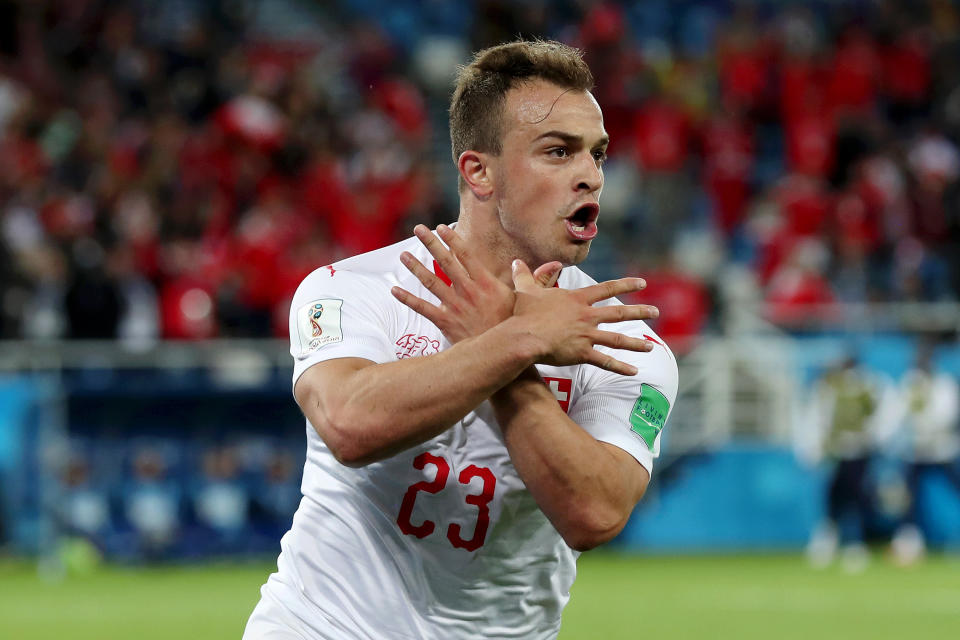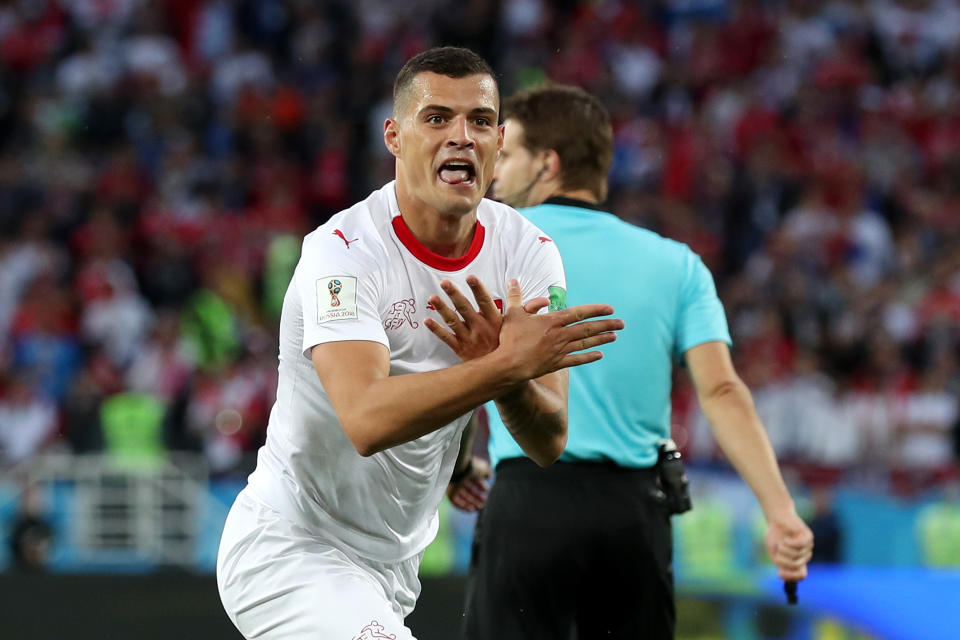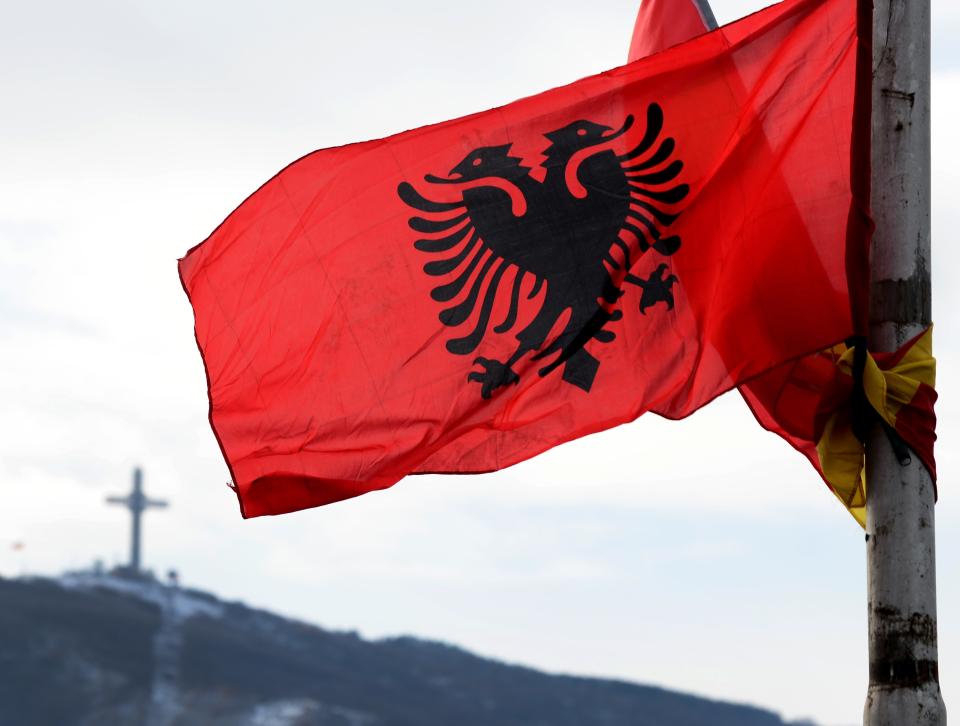World Cup Mystery Solved: What was the hand gesture made by the Swiss goal scorers?
Granit Xhaka and Xherdan Shaqiri both scored to lift Switzerland to a 2-1 win over Serbia in Friday’s Group E World Cup clash between the two teams. After scoring their respective goals, Xhaka’s a 52nd-minute banger from 30 yards and Shaqiri’s a calm extra-time finish from inside the box after drawing Serb keeper Vladimi Stojkovic out, both men made a similar hand gesture as part of their goal celebration.
The gesture involved folding their hands over one another with thumbs adjoined and palms facing inward, while seemingly simulating the flapping wings of a bird.

The fact that both men made a similar gesture is unlikely to be a coincidence.
Although they are both Swiss nationals who represent the Swiss national team, Shaqiri and Xhaka are also both of Kosovan-Albanian descent. The hand gesture the players made after scoring is known as the duart e kryqezuara, or crossed hands.

Also sometimes known as the eagle gesture, or the Albanian Eagle, the hand gesture is a patriotic symbol used by people from Albania, Kosovo, Skopje and other regions where ethnic Albanians reside. The symbol is intended as a representation of the double-headed eagle that’s the central image in the Albanian flag.

The provocative gesture is commonly seen at international soccer matches, particularly those contested between Balkan countries. Players and fans will often flash it when a goal is scored or at the end of a match.
In this case, there’s little doubt that both players intended the gesture as a statement towards Serbia and the Serbian team. Xhaka and Shaqiri both have Albanian-Kosovan roots and there are bitter feelings that remain in the region between Serbs and Kosovans following the bloody Kosovo war that ended in 1999.
Xhaka and Shaqiri’s goals against Serbia, along with their manner of celebrating them, obviously resonated with people in Kosovo. These were the scenes in the city center of Pristina, the country’s capital, following Switzerland’s 2-1 win.
Pristina city center after Switzerland-Serbia pic.twitter.com/Zi7wLqo21M
— Mitra Nazar (@Mitrala) June 22, 2018
While the World Cup is ostensibly about soccer, politics seem to have a way of seeping into international competition. Particularly when it’s between Balkan nations, or players like Shaqiri and Xhaka who identify with their Balkan roots despite their European nationalities.
More World Cup on Yahoo Sports:
• Bushnell: Who’s to blame for Argentina disaster?
• Johannsson has no regrets about choosing USMNT over Iceland
• Underappreciated Pogba emblematic of why France is dangerous
• Schaerlaeckens: Time for Mexican fans to end homophobic chant



